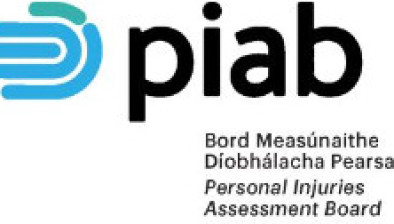Court of Appeal: Retrial directed for women injured while riding playground swing with toddlers

The Court of Appeal has allowed an appeal against the dismissal of two personal injuries claims for women who claimed to be injured while riding a swing in a playground with toddlers. A central feature of the case was a dispute between experts as to the minimum height clearance of the swing from the ground.

About this case:
- Citation:[2022] IECA 265
- Judgment:
- Court:Court of Appeal
- Judge:Mr Justice Seamus Noonan
Delivering judgment in the case, Mr Justice Seamus Noonan held that the engineering standards were not ambiguous and the trial judge failed to provide a meaningful assessment of why he rejected the plaintiff’s engineering evidence.
Further, the court held that the trial judge’s interpretation that the swings could only be used by children under 12 was “plainly wrong” and that adults were not prohibited from being on a swing while minding a toddler.
Background
The two plaintiffs in the case were injured in almost identical circumstances at the same playground. Both cases were heard together due to the similarity between the cases. Both women were at a children’s playground in Tipperary with toddlers and rode on a particular swing.
The swing was known as a basket swing, being made up of a large round frame with netting/mesh for people to sit. The swing moved gently in all directions. Critically, the netting/mesh fell lower than the rigid frame.
In both cases, the women were on the swing with the toddlers and, as they got off the swing, their ankles were caught underneath. Both women suffered ankle fractures and brought personal injuries proceedings against Tipperary County Council.
In evidence in the High Court, the safety standards were identified by expert witnesses. The standards specified that a minimum ground clearance for the swing should be 350 millimetres. Ground clearance was defined as the distance between the lowest part of the seat and the ground.
The defendants adduced evidence from an expert who stated that the minimum ground clearance related to the rigid frame rather than the netting/mesh, which meant that the swing was compliant with the relevant standards. The defendants’ expert also referred to an installation inspection from the Royal Society for the Prevention of Accidents which certified the swing.
The trial judge determined that there would be a “chilling effect” from these types of claims on the provision of play facilities for children. The judge also noted that there was signage which indicated that the playground was for use “of all children 12 years and under”. Accordingly, it was held that the swing was designed solely for children and it was common sense that the women should not have used them.
The trial judge also preferred the evidence of the defendants’ expert that the minimum ground clearance was measured from the frame because this was the point that a child exited the swing. Since the court dismissed the claim, the trial judge did not assess damages but provided comments on the principles to be applied.
Court of Appeal
After outlining the evidence and the trial judge’s decision, Mr Justice Noonan referred to a newly-adduced piece of evidence which came to light after the trial. It transpired that the council had not disclosed a relevant safety report on the swing and the report had to be obtained via a freedom of information request. In a report written a year before the trial, the swing was recorded as not being compliant with the relevant standards.
The report recorded that action needed to be taken which included raising the basket by 300 millimetres. The report required action to be taken within one month. It was said that the neither the solicitor, instructing insurer or expert had access to this report prior to trial.
In determining the appeal, the court rejected the trial judge’s decision on the interpretation of the standards. The standards were unambiguous and “could not be clearer”. The minimum ground clearance was simply the distance between the lowest part of the seat and the ground, the court said.
The defendants’ evidence was that the standards did not mean what they said, the court held. It was incumbent on a trial judge to analyse the views of each expert and come to a reasoned conclusion by applying logic and common sense (see James Elliott Construction Limited v Irish Asphalt Limited [2011] IEHC 269).
In this case, there was no “meaningful analysis” of the plaintiffs’ expert evidence and why it was viewed as incorrect by the trial judge. While the court clearly believed in the logic of the defendants’ approach, it did not address what was actually specified in the relevant standards. As such, the trial judge missed the point of the standards.
The court also noted that the defendants’ expert was influenced by the ROSPA installation report which stated that the swing complied with the standards, but the newly-adduced report was capable of have a decisive effect on this issue. The new evidence would have provided “very fertile ground” for cross-examination on the appropriate ground clearance.
The court turned to consider the trial judge’s decision that the cases should also be dismissed because the swings were to be used only by children. The court noted that no witness gave evidence that the swings were designed exclusively for children. While the signage indicated that the playground was for children 12 years and younger, it also stated that all children had to be supervised by an adult.
Mr Justice Noonan commented that the council probably sought to discourage teenagers or adults using the playground on their own and this was “perfectly understandable”. However, it was an entirely different thing to say that an adult with a toddler was prohibited from going on the swing to protect the child. This interpretation was “quite wrong” and “patently incorrect”.
Conclusion
In light of the court’s findings, the dismissal of the claims was erroneous, the court held. Where new evidence arose in the case, it was appropriate for the matter to be remitted to the High Court for a retrial.
The court noted that the trial judge provided extensive obiter comments of “what he considered to be the appropriate principles” for damages in personal injuries cases. The trial judge also “purported to express views on the level of damages to which the plaintiffs would be entitled”. The comments were clearly obiter but Mr Justice Noonan emphasised that the proper approach to assessing damages was the subject of many Court of Appeal judgments in recent years. Having regard to the views expressed by the trial judge, it was directed that a different judge should hear the retrial.
O’Mahoney v. Tipperary County Council and Ors. [2022] IECA 265










